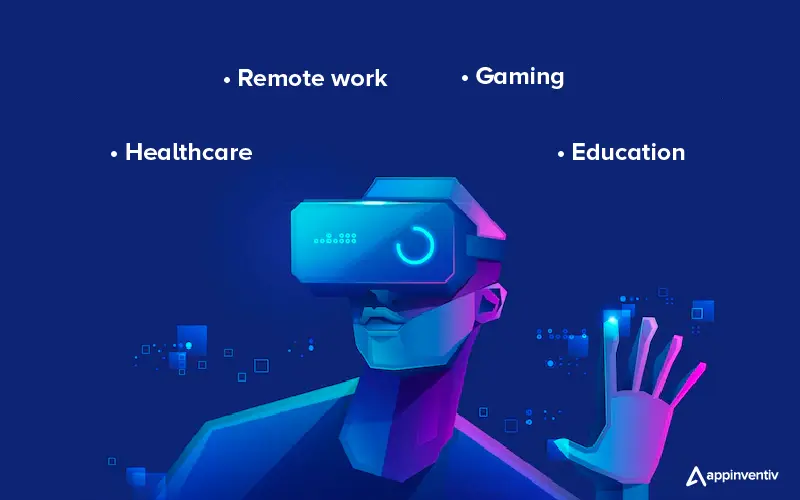
Metaverse-as-a-Service: The Enterprise Platform Unlocking Business Innovation
The Metaverse-as-a-Service (MaaS) platform enables businesses to create and deploy their own virtual worlds within the existing Metaverse infrastructure, similar to how SaaS operates. Rather than competing with established platforms like Decentraland and Roblox, MaaS helps enterprises integrate their services into the Metaverse ecosystem.

Man sitting in vibrant office environment
Key Use Cases for MaaS:
Remote Work:
- Enables virtual office environments
- Facilitates team collaboration and meetings
- Integrates with existing tools like Microsoft Teams
Healthcare:
- Secure patient data sharing
- AR-assisted robotic surgeries
- Virtual therapy and rehabilitation
- Remote patient monitoring
Education:
- Virtual learning hubs
- Long-distance collaboration
- Interactive learning models
- Gamified educational experiences
Gaming:
- Immersive gaming environments
- Play-to-earn models
- New marketing opportunities
- Cross-platform integration

Man using phone in digital environment
Leading MaaS Providers:
- Lovelace World
- Offers end-to-end MaaS solutions
- VR game monetization
- NFT integration
- Multi-chain smart contracts
- Propel MaaS
- Plug-and-play Metaverse solutions
- Smart contract deployment
- Gaming and DeFi integration
- Touchcast
- Custom .metaverse domains
- Mcity development
- Scalable enterprise solutions
Building a MaaS Platform:
- Ensure Interoperability
- Cross-platform compatibility
- Multiple identity support
- Diverse payment methods
- Focus on AR/VR Excellence
- High-quality immersive experiences
- Scalable architecture
- Adaptable models
- Expand Digital Presence
- Strong online visibility
- Accessible VR services
- Integrated user experience
- Deliver Experience Excellence
- Blend traditional and new experiences
- Create multiple revenue streams
- Focus on user engagement

Person using virtual reality headset
Implementation time varies from weeks to months, depending on technical expertise and requirements. The cost depends on specific use cases and solution complexity. Benefits include new revenue streams, improved remote collaboration, expanded customer base, and cross-platform integration capabilities.
[Remaining images retained as in original article]
Related Articles

Web 3.0 vs Web 2.0: Key Differences and Business Impact in 2024

